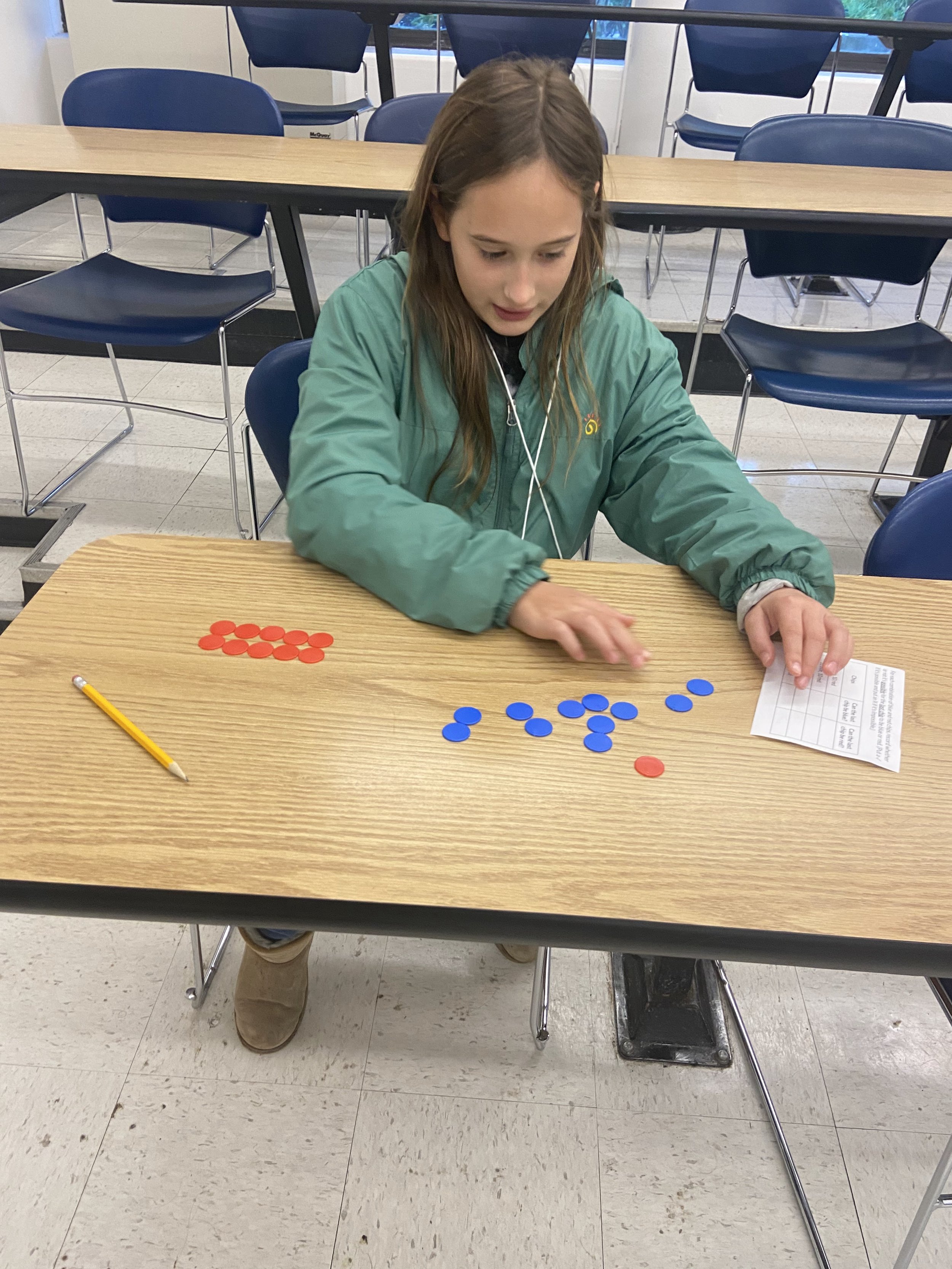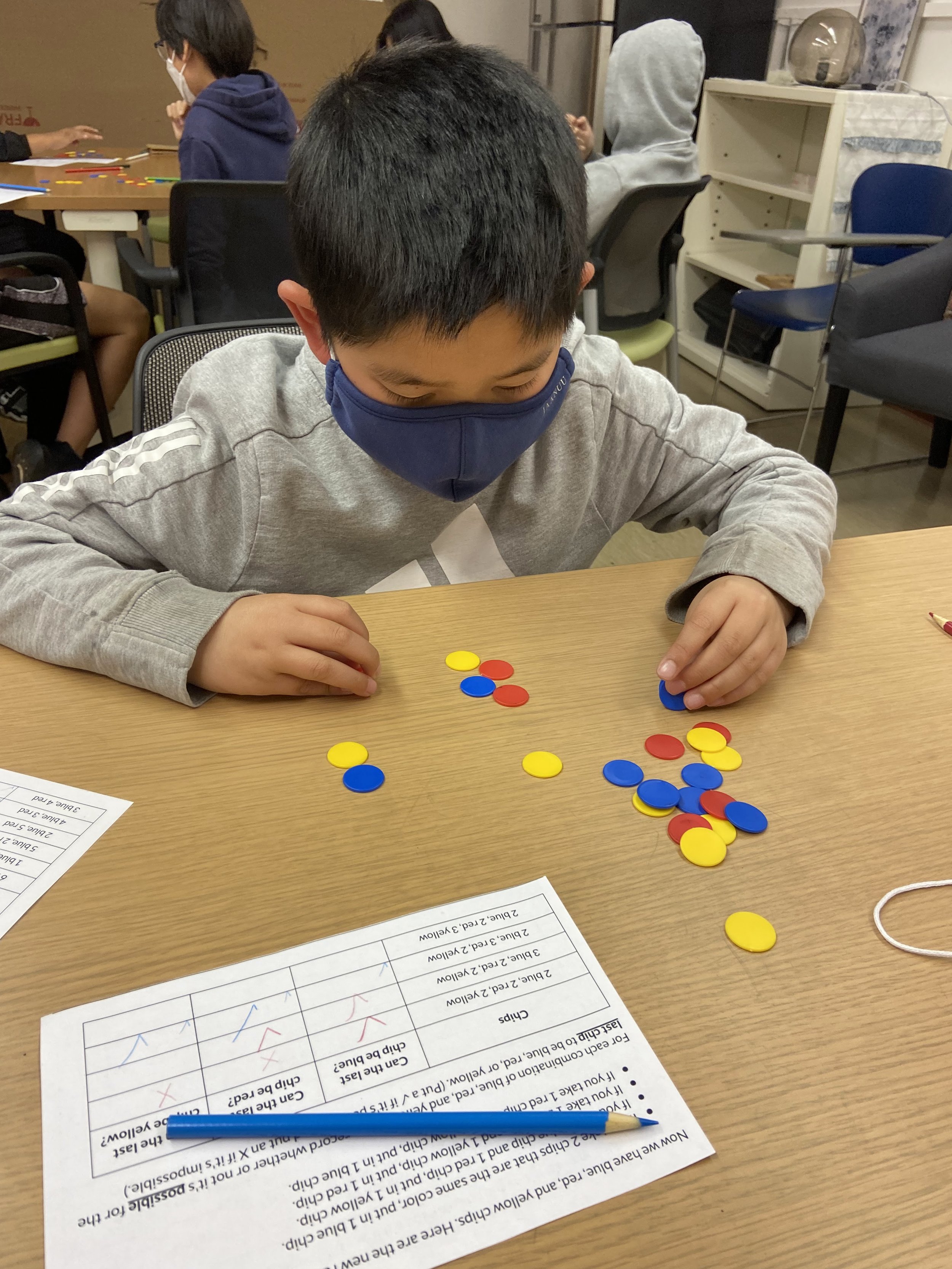Grab Bag
How it works
We start with a bag with 3 blue chips and 3 red chips. We take 2 chips out of the bag and put 1 chip into the bag.
- If the 2 chips we take out of the bag are the same color (both blue or both red), we put in 1 blue chip.
- If the 2 chips we take out of the bag are different colors (1 blue and 1 red), we put in 1 red chip.
We keep doing this (taking out 2 chips, putting in 1 chip) until there is only 1 chip left in the bag. If you try this, you'll find that it seems like the last chip always seems to be red. Is it possible for the last chip to be blue? What if you're allowed to look in the bag and decide which 2 chips to take out each time rather than picking 2 random chips? What if we start with a different combination of blue and red chips?
In this activity, students explore different combinations of blue and red chips. For each combinations, they try to figure out whether it's possible for the last chip to be blue, and whether it's possible for the last chip to be red. Then they attempt to find patterns that they can use to predict what color the last chip will be for different combinations of blue and red chips. They also explore a more complex version of the game with blue, red, and yellow chips.
Blue and Red data recording handout
Blue, Red, and Yellow data recording handout
Why we like this activity
- It’s fun! Students enjoy trying to get the last chip to be different colors and predicting what color the last chip will be.
- It helps students develop numerical reasoning.
It requires students to engage in mathematical habits of mind:
Finding and using strategies when trying to get the last chip to be a specific color.
Using logic, looking for patterns, making and testing predictions, and understanding and explaining when trying to predict what color the last chip will be for different combinations of chips.
- It has a low floor and a high ceiling: Students can start exploring by trial and error, but there are interesting patterns to find (and to try to understand) when trying to predict what color the last chip will be.










